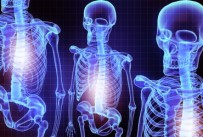Exercise and the intervertebral disc

Exercise and the intervertebral disc
Written by: Paul Kochoa, PT, DPT, OCS, CKTP, CGFI
I’ve written about discs issues and back pain before, and by now, you’ve probably realized that I’m a big proponent of movement and exercise, so this next post should be no surprise. Out of Gothenburg, Sweden was a study presented at the International Society for the Study of the Lumbar Spine regarding the positive effects of exercise on intervertebral discs.
The intervertebral disc is a structure of the spine that is situated between the bones, called the vertebrae, of the spine. It allows for movement and shock absorption in the spine and can be a source of pain when there’s a problem such as when it slips out of place, loses its height, or gets broken and the material inside leaks out.
As I’ve stated before, the disc acts like a sponge. It derives its nutrients from the surrounding interstitial fluid. Movement and exercise causes alternating compression and distraction of the intervertebral discs. This action allows the disc to absorb nutrients and stay healthy.
The study compared the intervertebral discs of rats who ran on a treadmill an hour a day with other rats who moved around freely in a cage. They found that the cells in the discs of the rats who ran on the treadmill proliferated more than those found in the rats who didn’t have a structured exercise program. This is evidence that the intervertebral disc can be positively affected by exercise.
The cells of the intervertebral disc can malfunction and cause degeneration of the disc itself. This degeneration of the disc is one cause of low back pain. If the findings of the study can be extrapolated to humans, there can be hope at changing or reversing this degenerative process. The study was performed on rats with normal intervertebral discs, therefore further research is needed to investigate the effects of exercise on degenerated discs of rats and ultimately to discs in humans in order to make definitive statements.
Exercise and movement has been an integral part of treatment of low back pain, but understanding the direct effects of exercise on the disc has been limited, especially at a cellular level. With further investigation and research, we can learn more and more about how the disc can repair itself, and hopefully even prevent disc degeneration.
If you’re suffering from back pain, go see a physiotherapist who can evaluate you and get you started on a program that can include specific exercises and movements to address your problem. If you would like more information, please call Professional Physical Therapy and Training at 973-270-7417. Our offices are located within the YMCA locations in Madison and Summit, NJ. You do not need to be a member of the YMCA to visit with us.
Image courtesy of renjith krishnan / FreeDigitalPhotos.net